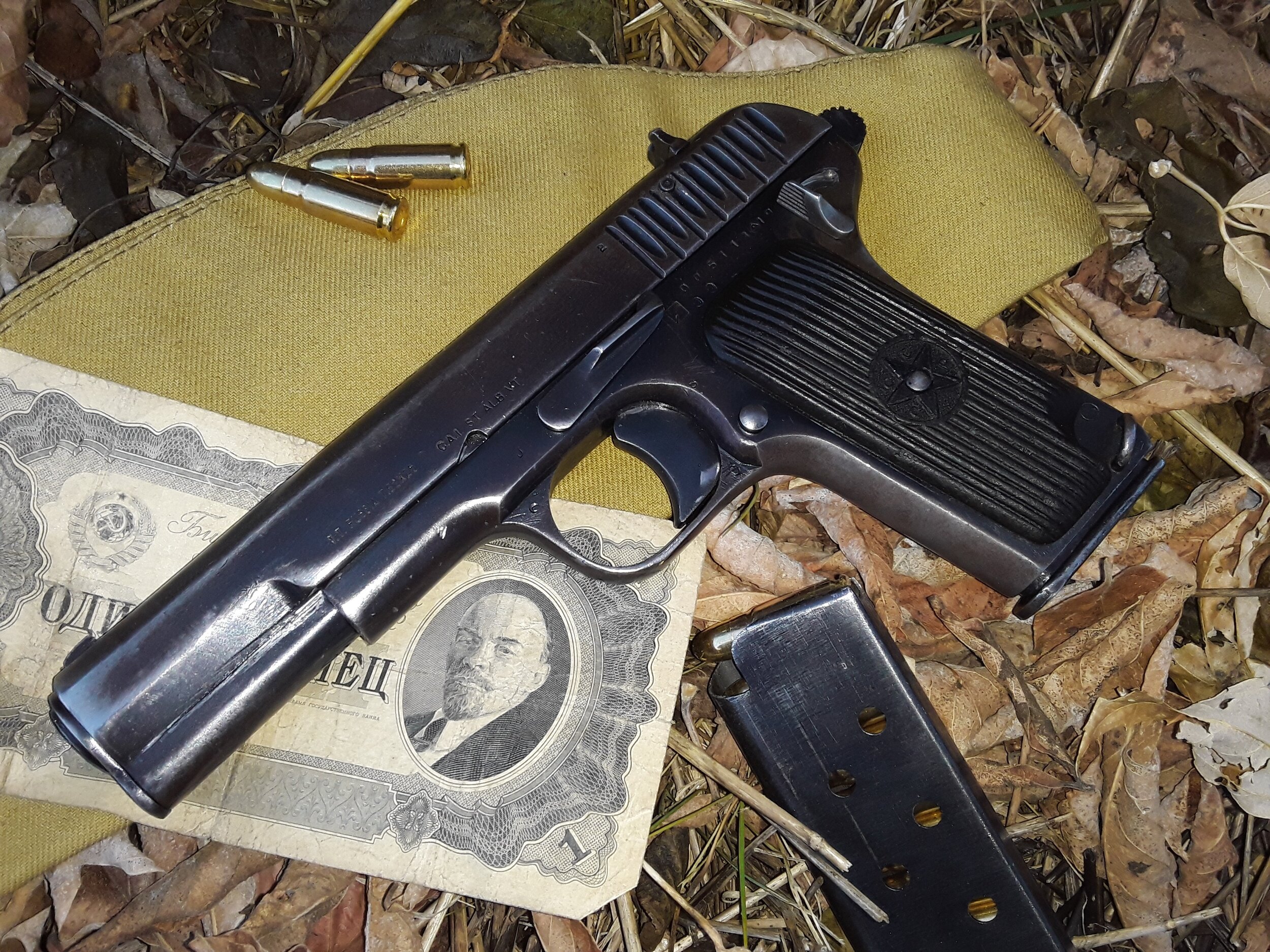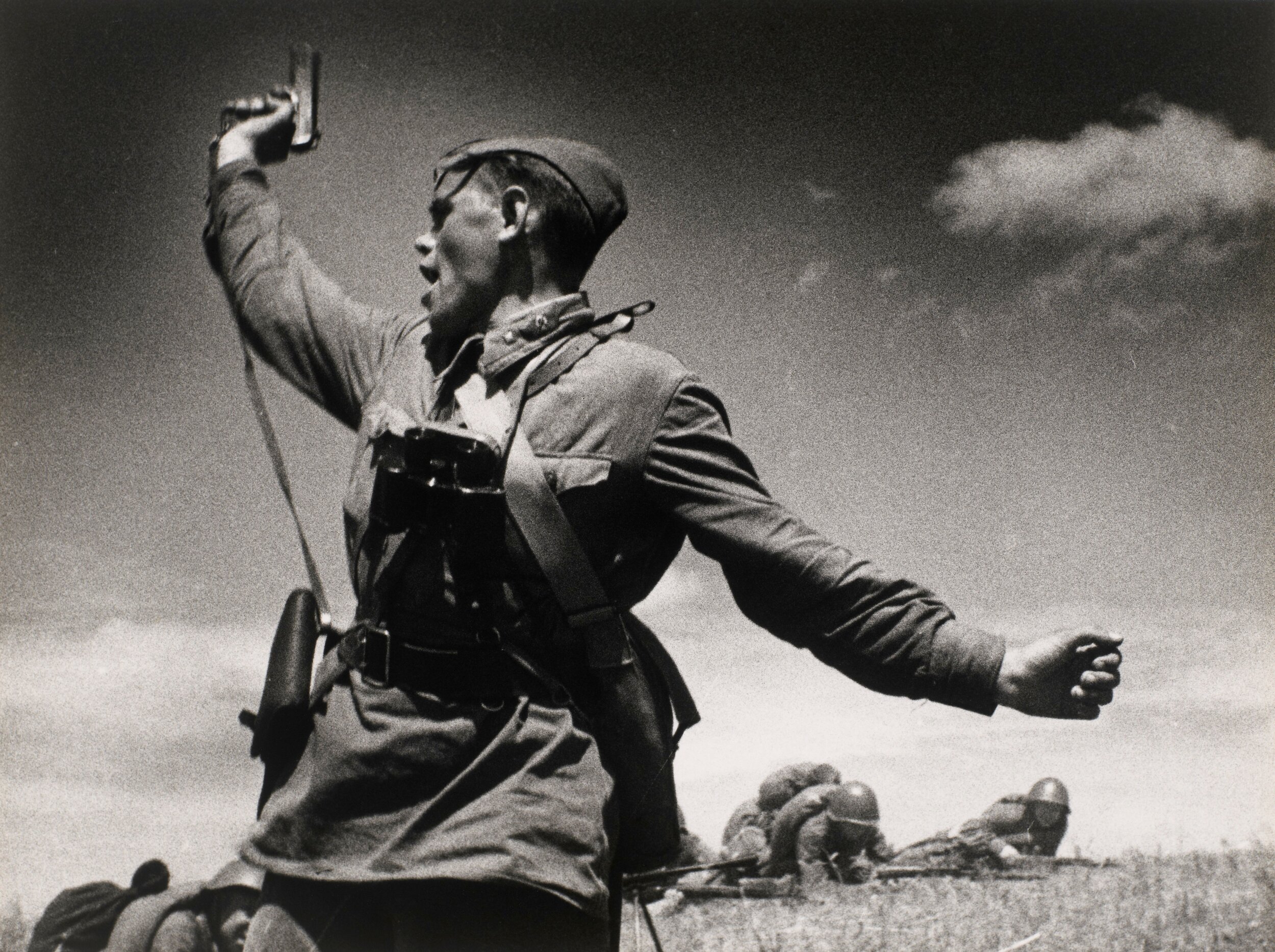TT33
The Soviet TT33 pistol was a single-action automatic that was adopted to replace the outdated Nagant M1895 revolver left over from the Imperial Army of the Great War.
The TT33, shown with ammunition, spare magazine, and a 1 Chervonetz banknote
The story of the TT33 began in 1930, when the Soviet authorities issued a requirement for a modern handgun design to replace the aging Nagant M1895 revolver, an outdated relic of Tsarist times. During the ensuing tests, the design put forward by Feordor Tokarev was selected as the top contender, despite issues identified with the trigger and accuracy, which were subsequently and quickly corrected.
Feodor Vasilievich Tokarev, designer of the TT33 along with several other Soviet weapons
Feodor Vasilievich Tokarev had been designing weapons since before the Great War, and had even designed a prototype of a conversion of the Mosin Nagant rifle to a semi-automatic design, landing him a position at the Sestroretsk Arms Factory, where he would continue work until called to service in 1914.
He would return to Sestroretsk in 1916 to continue his work on the autoloading rifle designs, where he remained during the turbulent year of 1917. He would eventually by sent to Izhevsk, where he would be caught up in a purge, tried for inefficiency in the plant and sentenced to death. His sentenced would be commuted and within a year he would be back at the arms plant, where he would work on designs for light machine guns as well as semi-automatic rifles.
His design for the 1930 pistol requirement included elements from the sucessful designs of John Browning coming out of FN in Belgium, namely the slide system and the locking mechanism, but mated to a new, seperate trigger pack and a few other simplifications.
The serial number, Izhevsk Arsenal mark, and date of 1944 marked on the top of the slide
The pistol was adopted by the Red Army in 1931 as the TT30, meaning Тульский Токарева (Tula Tokarev) model 1930. This pistol was produced for two years, before being replaced by the improved and further simplified TT33 model. The TT33 featured a simplified removable hammer assembly, a one piece frame, and simplified locking lugs, among other small changes, and it was this final design that would be in production for the Red Army in the Second World War.
Primary production for the pistol would take place at the famous Tula Arsenal, but in late 1941 production was shifted to the safer Izhevsk plant, as German forces advanced to the outskirts of the city of Tula. The TT33 would be a common sidearm to the Soviet Army during the Great Patriotic War, but would never manage to completely supplant the older Nagant revolver during the conflict.
The TT33 would remain as the standard sidearm of the Soviet Union until the adoption of the Makarov PM in 1952, although it still remains in limited use across the former Soviet Union to this day. Variants of the pistol were also produced by Warsaw Pact States, including the Polish People’s Republic, Hungarian People’s Republic, Socialist Republic of Romania, and others. China was also a prolific producer of the TT33, with a large number of their Type 54 variant being captured by the US in Vietnam.
A distinctive feature of wartime Soviet TT33 pistols are the unique slide serrations, which were changed in 1947 to more conventional vertical serations. Also note that the TT33 originally did not have a safety, but many had them added when imported into the United States, as this one unfortunately has.
The TT33 pistol is a single action semi-automatic pistol, chambering a 7.62c25mm cartridge and feeding from an eight round magazine. The pistol lacked a manual safety beyond a half-cock notch on the hammer (although many were added when imported into the US to comply with import laws). The TT33 has rather tall and open sights for a service pistol of the period, making for ease of aiming and corresponding with fairly accurate fire.
The distinctive bakelite grips of the TT33, emblazoned with the Soviet Star and the cyrillic letters “CCCP” translating to “USSR”
The cartridge for the TT33, the 7.62x25mm cartridge, which is noted for its high velocity performance, aided by its bottleneck profile, similar to most modern rifle cartridges. The German Mauser C96 had proven quite popular in Russia during the Civil War, and the weapon’s 7.63x25mm round was considered by the Soviet authorities to be superior to the current 7.62x38mm Nagant cartridge then in service, and with some alterations, notably to increase the velocity, the new 7.62x25mm cartridge, often refered to as the “7.62 Tokarev” in the United States, would be used not just in the TT series pistol but also the Soviet submachine gun designs, such as the famous PPSh-41. The Soviet weapons were generally able to use German Mauser ammunition, although it need to be noted that the German C96 can not handle the increased pressure of the Soviet round.
A 7.62x25mm cartridge, as produced today by Sellier & Bellot for commercial use.
My first handgun was a Polish TT33, which I unfortunately no longer own due to the jamming issues I experienced with it. I acquired this 1944 Soviet Izhevsk produced example a few years later at a local gun show, and have found it to be extremely pleasant to shoot, with excellent sights for a military handgun as well as good accuracy. The pistol is, in my opinion, not the simplest pistol to take down, mainly due to the difficulty in removing the non-captive mainspring, although certainly not overly difficult either. All in all the TT33 is a fine handgun and a valuable addition to any Second World War collection.
In one of the more famous images of the Red Army in the Great Patriotic War, an officer urges his men forward with his TT pistol photo from Wikimedia
Observed Values and Frequency
Updated: February, 2024
AVERAGE VALUE (USD): $750 - $1,250
FREQUENCY: Rare
COLLECTOR’S NOTES: Pistols without the import safety command a premium
Soviet variations are very uncommon in the United States







